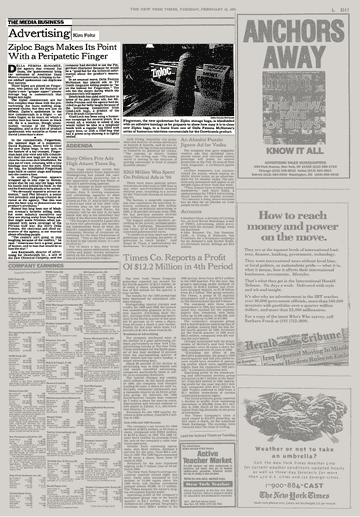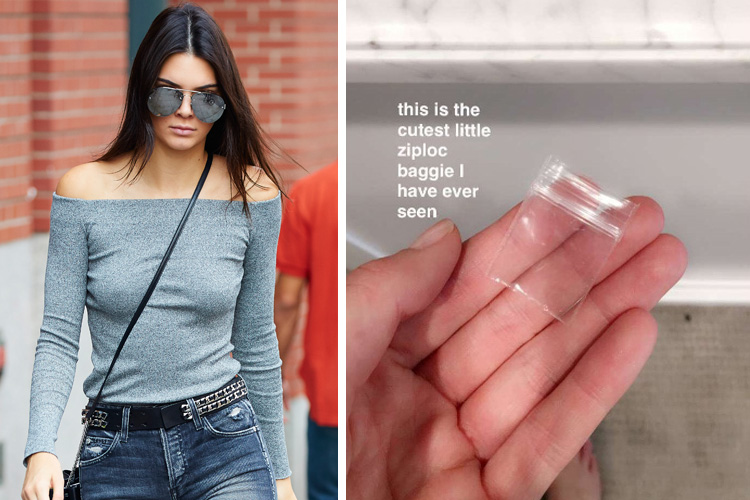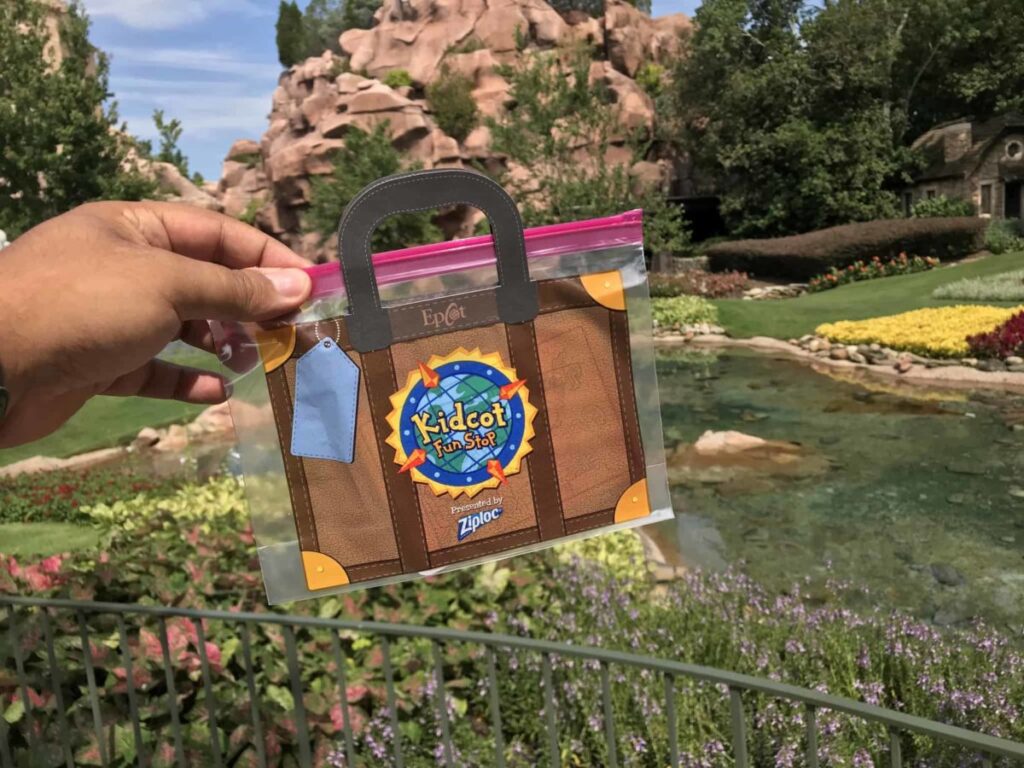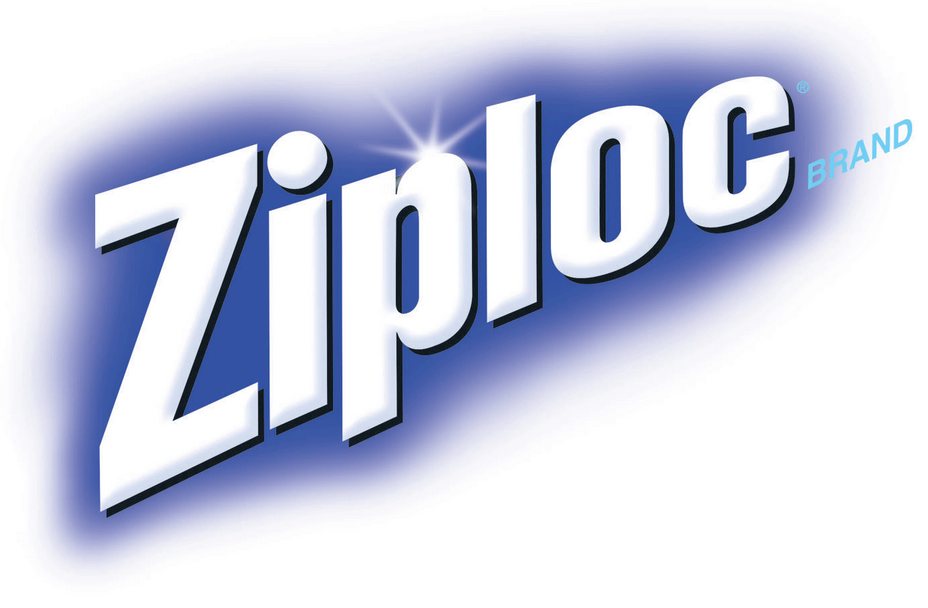Ziploc is a brand of resealable plastic bags owned by S. C. Johnson & Son. The bags were invented in 1968 by a team of engineers at Dow Chemical Company, who were looking for a way to keep food fresh longer. The bags were originally called “Zip-Loc” but the name was later changed to “Ziploc”.
Ziploc bags are made of a thin, flexible plastic that is heat-sealed to create a tight seal. The bags are available in a variety of sizes and colors, and they can be used to store a variety of foods and other items. Ziploc bags are also recyclable.
Ziploc bags were first introduced to the public in 1973, and they quickly became a popular household item. The bags were praised for their convenience and their ability to keep food fresh. Ziploc bags are now one of the most popular brands of plastic bags in the world.
In addition to traditional plastic bags, Ziploc also offers a variety of other products, such as freezer bags, sandwich bags, and storage containers. The company also offers a line of Ziploc brand products for pets.
Ziploc is a trusted brand that has been providing convenient and effective ways to store food and other items for over 50 years. The company’s products are made with high-quality materials and are designed to be durable and easy to use. Ziploc bags are a must-have for any kitchen or home.
Here are some of the key features of Ziploc bags:
- Resealable: Ziploc bags can be opened and closed multiple times, which makes them convenient for storing food and other items.
- Airtight: The tight seal on Ziploc bags prevents air from getting in, which helps to keep food fresh longer.
- Waterproof: Ziploc bags are waterproof, which means they can be used to store food in the refrigerator or freezer.
- Variety of sizes: Ziploc bags come in a variety of sizes to fit different needs.
- Variety of colors: Ziploc bags come in a variety of colors, so you can find one that matches your kitchen décor.
The Birth and Evolution of Ziploc: From Flexigrip to Worldwide Phenomenon
In 1951, the inception of Flexigrip, Inc. marked the beginning of the journey towards creating a revolutionary plastic zipper, purchased from inventor Borge Madsen. Initially, Flexigrip focused on binder inserts and flat briefcases, but soon shifted their efforts to packaging products in plastic zipper bags, becoming the primary market for their products.

In 1961, a pivotal moment arrived when Flexigrip, Inc. acquired exclusive manufacturing and selling rights for the Minigrip-type plastic zipper bag from Seisan Nippon Sha, a Japanese company. This laid the foundation for Minigrip, Inc., a company dedicated to producing and marketing these innovative bags. The Minigrip product would later secure an exclusive license for the grocery trade with the Dow Chemical Company, leading to phenomenal success.
During this time, plastic bags were produced in various countries, but high production costs hindered consumer sales. Dow Chemical, with the expertise of inventor R. Douglas Behr, embarked on a mission to develop an efficient high-speed process. Behr, despite having limited prior experience in plastics, quickly became a pioneer in the field and significantly increased line speeds, making plastic zipper bags more viable for consumer use.
In 1978, Signode, Inc. acquired Minigrip, followed by a collaboration between Signode and Dow to establish Zippak, a company dedicated to developing zipper bags for food products. Subsequently, Zippak became a subsidiary of Illinois Tool Works (ITW) in 1987 after ITW acquired Signode.
Over the years, Flexigrip/Minigrip/Zippak/Dow/Dow Brands accumulated an impressive portfolio of over 300 patents for plastic zippers, zipper bags, and the production methods and machinery used in their creation. The journey continued, and in 1997, S. C. Johnson acquired the rights of Dow Brands, which included Ziploc, solidifying Ziploc’s position as an iconic household name.
Today, Ziploc faces competition from brands like Presto (a subsidiary of Reynolds) and Pactiv. However, Ziploc’s continued innovation, such as developing Polypropylene-compatible zippers in 2003, has helped maintain its status as a global leader in food packaging.
The history of Ziploc is a testament to the power of innovative technology and strategic partnerships. From its humble beginnings as Flexigrip to being acquired by S. C. Johnson, Ziploc has transformed the way consumers store and preserve their food, becoming an indispensable household essential for millions worldwide.
Product Line of Ziploc
Ziploc offers a comprehensive product line of resealable storage bags and containers designed to cater to various storage and organization needs. Over the years, the brand has expanded its offerings to include different sizes, shapes, and types of bags, as well as innovative container solutions. Here is a detailed explanation of the product line of Ziploc:
Resealable Storage Bags:
-
- Freezer Bags: These bags are specifically designed to withstand low temperatures, making them ideal for storing food items in the freezer. They prevent freezer burn and keep food fresh for longer periods.
- Storage Bags: Versatile and multi-purpose, these bags are suitable for organizing and storing a wide range of items such as snacks, small household items, and travel essentials.
- Sandwich Bags: Sized to hold sandwiches, these bags provide a convenient and hygienic way to pack lunches for school or work. They can also be used to store snacks and small portions of food.
- Snack Bags: Smaller than sandwich bags, snack bags are perfect for holding small snacks, nuts, or other bite-sized treats, offering portion control and on-the-go convenience.
- Slider Bags: These bags feature an easy-to-use slider seal, allowing for quick opening and closing. They are available in various sizes and are suitable for a wide range of uses.
- Storage Gallon and Quart Bags: Larger-sized bags that are commonly used for storing bulk food items, leftovers, and other household items.
Containers:
-
- Twist ‘n Loc Containers: These containers feature a twist-on lid that creates a secure and leak-resistant seal, making them perfect for storing liquids, soups, and other food items.
- One Press Seal Containers: These containers have a unique, easy-to-use lid that seals with just one press, making them convenient for packing lunches and storing leftovers.
- Serving Bowls: Ziploc offers a line of serving bowls with secure snap-on lids, making them ideal for storing and serving salads, snacks, and other foods at gatherings and parties.
Eco-Friendly Options:
-
- Compostable Bags: Ziploc offers compostable resealable bags made with plant-based materials that break down in commercial composting facilities.
- Recyclable Bags: Some Ziploc bags are made with recyclable materials, allowing consumers to contribute to reducing plastic waste.
Specialty Bags:
-
- Big Bags: These extra-large bags are designed for storing bulky items, seasonal clothing, and bedding, providing a space-saving solution for organizing closets and storage spaces.
- Vacuum Seal Bags: Ziploc offers vacuum seal bags that are compatible with vacuum sealing machines, providing an airtight and space-saving storage solution for food and other items.
The wide variety of Ziploc products caters to different needs, from simple food storage to organizing household items and packing on-the-go snacks and lunches. Their practical design, reliable seals, and versatility have made Ziploc a trusted brand for millions of consumers worldwide. Additionally, the brand’s commitment to sustainability is reflected in their eco-friendly options, providing environmentally conscious choices for consumers seeking more sustainable alternatives.
Innovation behind Ziploc Technology
The innovative technology behind Ziploc is the “press-and-seal” mechanism that allows the bags to be opened and closed repeatedly, creating an airtight and watertight seal. This unique feature revolutionized the food storage industry and made Ziploc bags a household essential. Here’s a detailed explanation of the innovative technology of Ziploc:
Resealable Seal Design: The foundation of Ziploc’s technology lies in the design of the seal. The bags are equipped with interlocking grooves on the opening, which enables the user to press the two sides of the bag together to seal it. When pressed firmly, the grooves interlock, creating a tight and secure closure. The seal is strong enough to prevent leaks and spills, making the bags suitable for both liquid and solid items.
Easy-to-Use Slider Seal (Slider Bags): Ziploc offers a variation of their resealable bags known as “slider bags,” featuring a convenient slider seal. The slider is a plastic piece attached to the top of the bag, which can be moved back and forth to open or close the bag. The slider seal provides an effortless way to seal the bag with a simple sliding motion, eliminating the need to press and align the grooves.
Durable and Flexible Material: Another critical aspect of Ziploc’s technology is the material used to make the bags. The bags are typically made of polyethylene, a lightweight and flexible plastic that is also durable and resistant to tearing. This material allows the bags to maintain their shape while accommodating various items.
Preservation of Freshness: The airtight and watertight seal created by Ziploc’s press-and-seal technology helps preserve the freshness and flavor of the stored food. By preventing air and moisture from entering or escaping the bag, Ziploc bags can extend the shelf life of perishable items, reduce the risk of freezer burn, and keep snacks and meals fresher for longer periods.
Versatility and Reusability: One of the most significant advantages of Ziploc’s technology is its versatility and reusability. The bags can be opened and closed multiple times without compromising the integrity of the seal. This feature allows consumers to store, organize, and transport various items conveniently, making Ziploc bags suitable for use in the kitchen, during travel, for school or work lunches, and for organizing household items.
Microwave and Freezer Safe: Ziploc bags are designed to be microwave-safe and freezer-safe, adding to their versatility. Consumers can use the bags to store and reheat food in the microwave or to freeze meals, ingredients, and leftovers without worrying about damaging the bags.
Complementing Container Technology: In addition to bags, Ziploc also offers various containers with complementary seal technology. Twist ‘n Loc containers, for instance, feature a twist-on lid that creates a secure seal, while One Press Seal containers have a unique lid that seals with just one press.
Overall, Ziploc’s innovative press-and-seal technology has had a significant impact on the way people store and preserve food and other items. Its practicality, durability, and versatility have made Ziploc bags and containers a staple in households worldwide, offering a simple and effective solution for food storage and organization needs.
Marketing Strategies of Ziploc
Ziploc has implemented various marketing strategies over the years to establish itself as a household name and maintain its market leadership. Here’s an analysis of some of the key marketing strategies employed by Ziploc, including advertising campaigns, celebrity endorsements, and social media engagement:
Advertising Campaigns:
Ziploc has been using advertising campaigns as a marketing strategy for many years. Some of their most successful campaigns include:
The “Ziploc Finger” campaign: This campaign, which ran in the early 1990s, featured a character with a giant Ziploc finger. The character was used to demonstrate the convenience of Ziploc bags and their ability to keep food fresh.

The “Ziploc : More than a bag” campaign: This campaign, which ran in 2017, featured the tagline “Ziploc : More than a bag” The campaign was designed to show that Ziploc bags are a durable and reliable way to store food and other items.
These are just a few examples of Ziploc’s successful advertising campaigns. The company has a long history of using advertising to reach its target audience and promote its products.
Ziploc’s advertising campaigns have been effective in raising awareness of the brand and its products. They have also helped to position Ziploc as a trusted and reliable brand for storing food and other items.
Ziploc’s advertising campaigns are an important part of the company’s marketing strategy. They help to reach new customers, build brand awareness, and position Ziploc as a leader in the food storage industry.
Celebrity Endorsements:
Ziploc has collaborated with well-known celebrities and influencers to endorse its products, boosting brand credibility and attracting attention from a broader audience. Celebrity endorsements have been used in TV commercials, print ads, and social media campaigns. These endorsements create emotional connections with consumers, who may be inspired by their favorite celebrities using Ziploc products in their own lives.
Ziploc has also used celebrity endorsements as a marketing strategy. Some of the celebrities who have endorsed Ziploc bags include:
Martha Stewart: Martha Stewart is a well-known homemaker and businesswoman. She has endorsed Ziploc bags on numerous occasions, and she has even created her own line of Ziploc products.
Dwayne “The Rock” Johnson: Dwayne “The Rock” Johnson is a popular actor and former professional wrestler. He has endorsed Ziploc bags in a number of commercials, and he has even appeared on the packaging of some Ziploc products.
Khloé Kardashian: Khloé Kardashian is a reality TV star and businesswoman. She has endorsed Ziploc bags on her social media accounts, and she has even used Ziploc bags in her cooking videos.
Celebrity endorsements can be an effective way to reach a wider audience and build brand awareness. When a celebrity endorses a product, it gives the product a sense of credibility and trust. This can be especially helpful for products that are new to the market or that are trying to reach a new audience.
Ziploc’s celebrity endorsements have been effective in reaching new customers and building brand awareness. The company has worked with a variety of celebrities who have a strong following among their fans. This has helped Ziploc to reach a wider audience and to position itself as a trusted brand for food storage.

Social Media Engagement:
Ziploc also uses social media engagement as a marketing strategy. The company has a strong presence on Facebook, Twitter, and Instagram, and it uses these channels to connect with its target audience.
Ziploc’s social media team shares a variety of content on its channels, including recipes, tips, and product information. The team also runs contests and giveaways, and it interacts with its followers in the comments section.
Ziploc’s social media engagement strategy has been effective in building brand awareness and engaging with its target audience. The company’s social media channels have millions of followers, and its posts are often shared thousands of times.
Innovative Product Packaging:
Innovative product packaging is a key marketing strategy employed by Ziploc to enhance brand visibility and create a lasting impression on consumers. Ziploc’s product packaging is designed with several innovative features, which contribute to the brand’s success. Here’s a brief explanation of how innovative product packaging serves as a marketing strategy for Ziploc:
Distinctive Branding: Ziploc’s product packaging prominently displays the brand’s logo and uses a recognizable color scheme of red and blue. This distinctive branding creates strong brand recall and helps consumers easily identify Ziploc products on store shelves.
Functional and User-Friendly Design: Ziploc’s packaging is designed with functionality in mind. The bags and containers are easy to open and close, allowing for quick and hassle-free access to stored items. The convenience of the packaging reinforces positive customer experiences, encouraging repeat purchases.
Value Packs and Multipacks: Ziploc offers value packs and multipacks, providing consumers with cost-effective options to purchase in bulk. This packaging strategy appeals to value-conscious shoppers and encourages them to buy more, contributing to increased sales.
Product Variety: Ziploc’s packaging includes a diverse range of sizes and types of bags and containers to cater to different storage needs. The clear labeling of each product type helps consumers easily find the right product for their specific requirements.
Eye-Catching Graphics: Ziploc’s packaging often features eye-catching graphics and imagery, demonstrating various use cases and scenarios for its products. These visuals effectively communicate the versatility of Ziploc bags and containers, inspiring consumers to explore different uses for the products.
On-Pack Promotions and Information: Ziploc’s packaging may include on-pack promotions, discounts, or informational content, providing added value to consumers. This encourages consumers to engage with the product packaging and can influence purchase decisions.
Sustainability Messaging: In line with growing environmental awareness, Ziploc’s packaging may include messaging about eco-friendly and recyclable options. This highlights the brand’s commitment to sustainability, appealing to environmentally conscious consumers.
Visibility on Store Shelves: Ziploc’s packaging stands out on store shelves due to its distinctive design and branding. The visibility and shelf appeal help the brand compete effectively with other products in the food storage category.
By incorporating innovative product packaging, Ziploc not only enhances the consumer experience but also strengthens brand recognition and recall. The packaging serves as a powerful marketing tool, enticing consumers to choose Ziploc products over competitors and reinforcing the brand’s position as a reliable and trusted solution for food storage and organization needs.
Partnerships and Co-Branding:
Ziploc also uses partnerships and co-branding as a marketing strategy. This involves partnering with other companies to create products or marketing campaigns that appeal to a wider audience.
Here are some of the ways that Ziploc uses partnerships and co-branding to market its products:
Partnerships with retailers: Ziploc partners with retailers to create exclusive products or marketing campaigns. This can help to increase brand awareness and sales. For example, Ziploc has partnered with Target to create exclusive products, such as a line of Ziploc bags with the Target logo.
Co-branding with other brands: Ziploc co-brands with other brands to create products that appeal to a wider audience. This can be done by putting the logos of two brands on the same product or by creating a joint marketing campaign. For example, Ziploc has co-branded with Tupperware to create a line of Ziploc bags that fit in Tupperware containers.
Sponsorships: Ziploc sponsors events or organizations to associate its brand with positive images. This can help to increase brand awareness and goodwill. For example, In 2018 Ziploc became the official sponsor of Splash Mountain at the Magic Kingdom, Walt Disney World. It also became the sponsor for the 11 Kidcot Fun Stops at each pavilion around Epcot’s World Showcase. Each Fun Stop has new signage that features “Presented by Ziploc” at the bottom.

Ziploc’s partnerships and co-branding efforts have been effective in reaching new customers and building brand awareness. The company has partnered with a variety of well-known brands, and its products have been featured in a variety of marketing campaigns.
Promotional Offers and Contests:
To drive engagement and boost sales, Ziploc runs promotional offers, discounts, and contests from time to time. These initiatives encourage consumers to try Ziploc products and, in turn, contribute to brand loyalty and repeat purchases.
In conclusion, Ziploc’s marketing strategies have played a pivotal role in establishing the brand as a leader in the food storage industry. The use of creative advertising campaigns, celebrity endorsements, social media engagement, and other marketing initiatives has helped Ziploc build a strong brand identity and connect with consumers on a personal level. As a result, Ziploc remains a go-to choice for millions of consumers worldwide when it comes to practical and reliable food storage solutions.
Also Read: The Marketing Marvel of Band-Aid: Strategies and Mix Decoded
To read more content like this, subscribe to our newsletter



